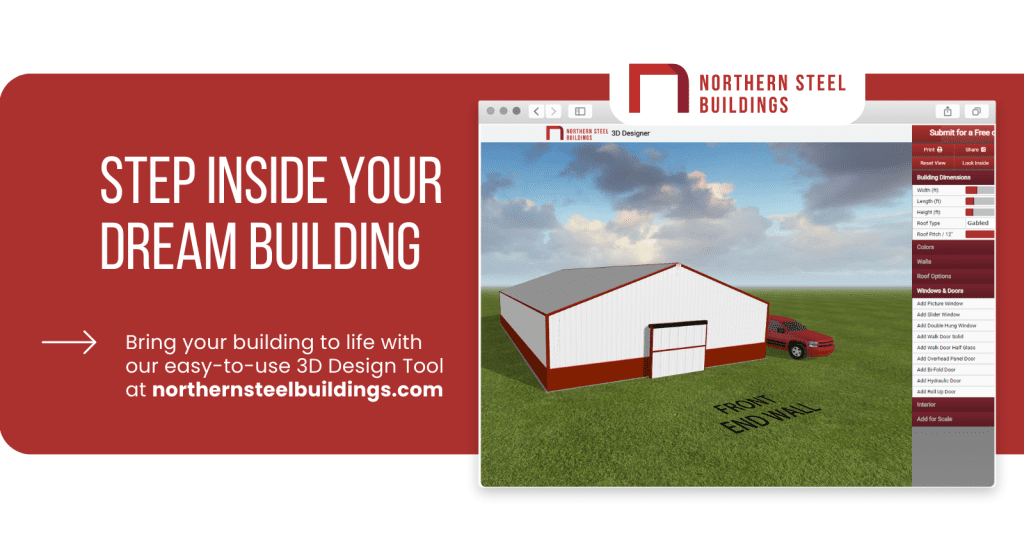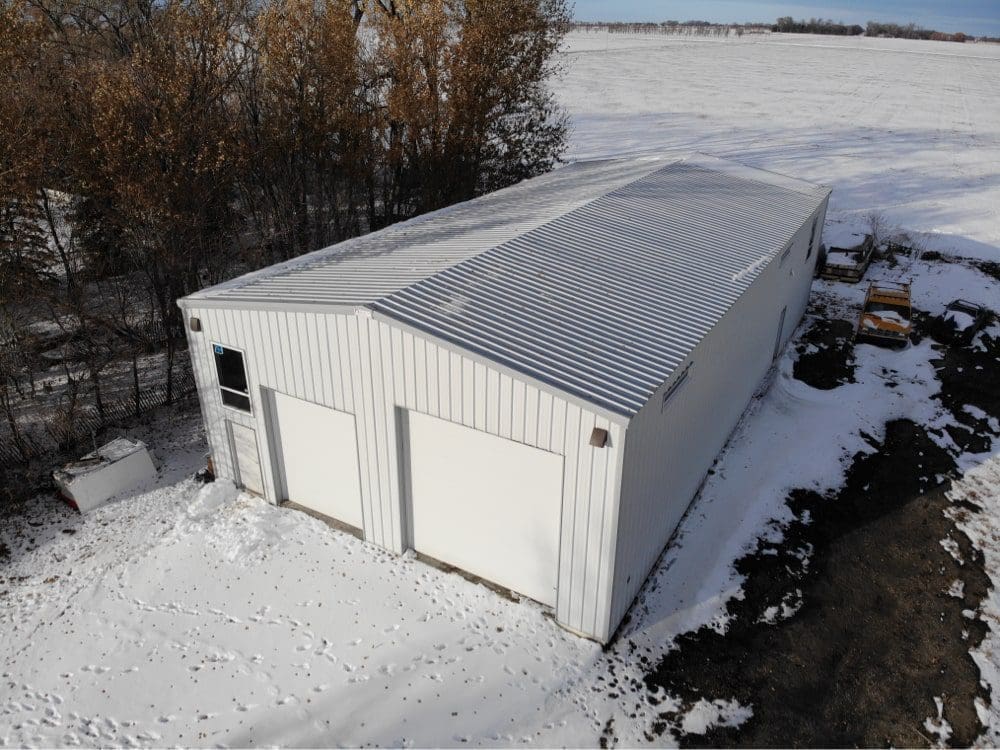Table of Contents
Is Steel Right For You?
When choosing between steel vs wood buildings for your new shop or building, it’s important to consider your specific needs and priorities.
A common question when it comes to wood vs. steel is, “If wood is cheap, why would I want to build with steel?”
The short answer is, you get what you pay for.
The long answer is, while the upfront costs are higher, the benefits of steel are many and may actually save you more money in the long run.
Wood vs. Steel: 7 Benefits of Pre-engineered Steel
Some benefits of steel include…
- Longevity: pre-engineered steel buildings last generations
- Durability: when it comes to wood vs steel strength, pre-engineered steel buildings can withstand weather events like snowstorms, high winds, and earthquakes
- Low maintenance: pre-engineered steel buildings aren’t susceptible to termites or rot, which can tip the scales when it comes to wood vs steel building cost.
- Quick construction: When it’s wood vs steel construction, pre-engineered steel buildings have a quick assembly time thanks to the bolt-together, pre-cut components, and pre-punched holes
- More usable square footage: pre-engineered steel buildings don’t require interior columns which means more flexibility for how you use the space, whether it’s storing large farm equipment or installing a crane
- Safety: In the event of a fire, steel provides better protection for your equipment as it is non-combustible
- Aesthetics: Both wood and steel have their own unique look and feel. You may prefer the warmth and natural feel of wood, or the sleek, modern look of steel.
Are you planning a new build? Want to see what it would look like? Visualize your project with our easy-to-use 3D Design Tool. Just input your building dimensions and explore what a pre-engineered building could look like with a variety of door options, a mezzanine, or skylights.


Wood vs. Steel: Durability and Maintenance
Overall, when it comes to the question of wood vs. steel, steel is a popular choice for commercial buildings, including shops, due to its durability, strength, and resistance to fire, pests, and weather conditions.
So, while wood is cheaper, it requires regular maintenance and is prone to decay, rot, and insect infestation if not properly treated and protected. This can reduce its longevity and require costly repairs or replacements over time.
Wood vs. Steel: Construction Time
Steel buildings can also be prefabricated, which can save time and labor costs during construction. Additionally, steel buildings can be designed to be energy-efficient, with insulation and ventilation systems to help reduce heating and cooling costs.
Wood vs. Steel: Usable Space
Because steel is stronger than wood, steel building components can span longer distances without the need for additional support columns or load-bearing walls. This allows for larger interior spaces without interruptions.
Steel building components can be manufactured in a variety of shapes and sizes, which means that steel buildings can be designed to accommodate a wide range of floor plans and configurations. This versatility can maximize usable space. Steel buildings can also be constructed to taller heights than wood buildings due to their superior strength, which allows for more usable space to be created vertically.


Wood vs. Steel: Safety
In general, steel buildings are considered to be safer than wood buildings in the event of a fire. This is because steel is a non-combustible material that does not contribute to the spread of fire or emit harmful gases or chemicals when exposed to high temperatures.
On the other hand, wood is a combustible material that can fuel fires and contribute to the rapid spread of flames. In addition, burning wood releases toxic gases and chemicals, such as carbon monoxide and hydrogen cyanide, which can pose serious health risks to occupants and first responders.
Steel buildings are also designed with fire safety in mind, and are typically constructed with fire-resistant coatings or insulation that can help to contain flames and limit damage. This can give occupants more time to safely evacuate the building and allow firefighters more time to extinguish the fire.
However, it is important to note that the safety of any building in the event of a fire will depend on a variety of factors, such as the size and intensity of the fire, the building’s design and construction, and the availability and effectiveness of fire suppression systems. It is always important to prioritize fire safety in any building, regardless of the construction materials used.


Wood vs. Steel: Aesthetics
The aesthetic appeal of wood versus steel as a construction material can be subjective and depend on personal preferences, as well as the intended use and style of the building. Both wood and steel have unique characteristics and can be used to create visually appealing buildings.
Wood is often associated with a more traditional or rustic aesthetic, and its natural grain and warmth can create a cozy and inviting atmosphere. Wood can be used to create intricate and ornate designs, and can be finished in a variety of stains or paints to complement different architectural styles.
Steel, on the other hand, is often associated with a more modern or industrial aesthetic. Its clean lines, smooth surfaces, and metallic finishes can create a sleek and contemporary look. Steel can also be used to create unique and innovative designs, such as curved or cantilevered structures, that would be difficult to achieve with wood.
Conclusion
In the end, when choosing between wood vs. steel for a shop, it’s important to consider your specific needs and priorities. If durability and low maintenance are a top priority, then steel may be the better choice. However, if you are looking for a more traditional or rustic aesthetic, or if you have budget constraints, then wood may be a good option.
Either way, it’s important to carefully weigh the pros and cons of each material to determine the best choice for your project.


Want to Speak With an Expert?
Once you have a good handle on your priorities for your building, share your vision with a helpful building consultant at Northern Steel Buildings. Steel buildings are what we do!
Give us a call at: 1 (877) 751-3486
